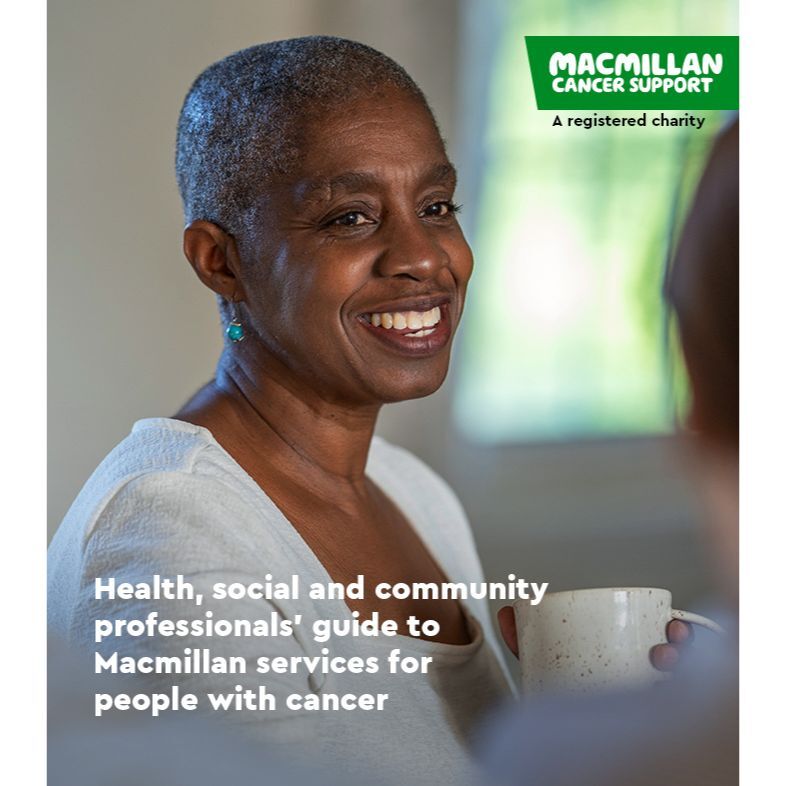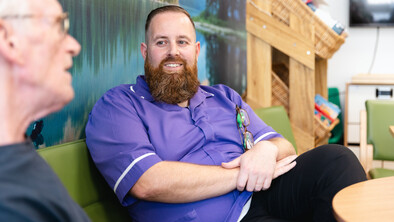Demystifying genomics in cancer care
What do I need to know?
Cancer is a disease of the genome, caused by unchecked cell growth due to mutations or changes in our DNA. Cancer genomics involves studying the genetic changes in cancer cells, allowing us greater insight into prevention, early detection, treatment, prognosis and recurrence.
As healthcare professionals working within cancer care it’s vital that we understand the impact of genomics now and the potential for the future so that we can inform our patients and allow them to be active in treatment decisions made for and about them. If we don’t know enough about this topic, how can they? It’s vital that we demystify this topic, making it more accessible for everyone.
A quick recap on DNA, chromosomes and genes
We can all picture the double helical structure that makes up a strand of DNA (or deoxyribonucleic acid). This complex molecule (or polymer) can mostly be found in the nucleus of our cells (although some DNA can also be found in our mitochondria), carrying the genetic instructions for our growth, development, functioning and reproduction. It sits, tightly coiled, in structures we know as chromosomes. We have 23 pairs of chromosomes in each cell, with one chromosome from each pair inherited from our mother and one from our father. One chromosome pair determines whether we are male or female and the other 22 pairs determine our physical characteristics.
A gene is simply a section of DNA and the chromosomes contain many genes (we have around 20,000 genes in total). Each gene codes for a specific amino acid and a specific sequence of amino acids make a specific protein. Sometimes you may hear a gene referred to as the unit of heredity which can be passed from one generation to the next.
Visit the Genomics Education Programme website to view an image of a cell to chromosome to DNA.
When does a genetic change become cancer?
Most of the time, small gene changes can occur which do not have any effect on our health but explain genetic diversity e.g. different hair colour or eye colour. Sometimes genetic changes can occur which means that proteins are not formed properly or at all.
In the case of cancer, a change is introduced which causes the cells to multiply uncontrollably – they become cancer cells and allow a cancer to develop. Most of the time these cancer-causing genetic changes are acquired i.e. they occur from damage to genes in a particular cell during a person’s life (also known as sporadic cancer).
The genetic changes are only found within the cancer, NOT within every cell in the body and therefore the changes cannot be passed from parent to child. This can happen due to errors that occur as cells divide, often as we age or due to DNA damage caused by environmental factors such as ultraviolet rays from the sun and chemicals in tobacco smoke.
Why does cancer run in families?
Around 5-10% of cancers are caused by inherited or germline changes. This is where a genetic alteration occurs in a sperm or egg cell. It passes from the parent to the child at the time of conception and the alteration in the initial egg or sperm cell is copied into every cell within the body. As the genetic alteration affects reproductive cells it can pass from parent to child and onwards to subsequent generations. Conditions such as BRCA and Lynch Syndrome, are examples of inherited cancer syndromes. These dominantly inherited conditions can greatly increase an individuals risk of developing cancer and mean that there is a 50% (or 1 in 2) chance that a parent can pass the genetic alteration onto their child.
Identifying a person with an inherited form of cancer is important. It means they can be looked after more closely in the future but it also has important implications for the family. If a genetic alteration is found, predictive genetic testing can be performed in at risk family members (they are offered a genetic blood test to see if they have the same genetic alteration found in their relative). If they also have the condition, there is the ability to prevent cancer or diagnose it at an earlier stage, with strategies such as chemoprevention, surveillance tests and preventative surgery.
Genomics is being mainstreamed into cancer and other diseases as per Genome UK Strategy, with devolved leadership locally to NHS Genomic Medicine Service. A national transformation project led by the NHS Genomic Medicine Service aims to increase detection of people with Lynch Syndrome. Raising the profile of genomics, through initiatives like this and increasing routine cancer testing will hopefully improve detection of all inherited cancer syndromes.
Gene changes that can lead to cancer
Three main types of genes tend to be affected by genetic changes that cause cancer - tumour suppressor genes, proto-oncogenes and DNA repair genes.
- Proto-oncogenes – these are genes involved in normal cell growth and division so if genetic alterations occur in these genes they can change into cancer causing genes (or oncogenes). Oncogenes allow cells to survive and grow when they should not
- Tumour suppressor genes are also involved in controlling cell growth and division. A fault in a tumour suppressor gene may stop it functioning properly and allow a cancer to develop due to uncontrolled cell division.
- DNA repair genes are involved in repairing damaged DNA. If an alteration occurs in one of these genes, the cell is less able to repair itself and errors are more likely to build up over time leading to cancer development.
How does genomics help us to develop better treatments for cancer?
Genomics allows us to develop more precise treatments for cancer. Targeting treatments that focus on a cancer’s genetic makeup rather than where it has grown in the body.
Moving towards more precision treatments for cancer is better as it avoids using a blanket approach of giving one treatment (e.g chemotherapy) to everyone with a certain cancer. People with the same cancer can have different forms of the disease which is why in the past, certain people responded well to chemotherapy but for some it did not work at all.
There are still many challenges to overcome, however. One challenge is the huge genetic diversity that can often be found within cancer cells, which often makes finding the mutations that are driving the cancer difficult. In addition, not all mutations are targetable and drugs for some targets are very hard to develop. Cancers can become resistant to targeted therapy and sometimes a combination of treatments may be needed.
Whilst the future is exciting, we still have a long way to go before genomic sequencing for every cancer and personalised treatment for everyone is possible and accessible.
Exciting developments in cancer genomics
Studies such as the Galleri trial are hoping to see if DNA changes in our blood (liquid biopsies) can help detect cancer at a much earlier stage. If successful, there is the potential for a specialist blood test to be used as a national screening tool for certain cancers.
There is also the potential for so call ‘liquid biopsies’ to be used in surveillance strategies for people who have had cancer. The hope is that cancer recurrence could be picked up at a much earlier stage than current surveillance programmes, where often a cancer recurrence or metastasis has to be detectable on a CT scan before it can be diagnosed and treated.
Just last month the government announced a partnership with BioNTech to develop cancer vaccines. These are a type of immunotherapy treatment and it’s an active area of research. If successful, cancer vaccines could be coming to the NHS very soon.
What do we have to say about genomics in cancer care?
It’s exciting to see the impact that genomics is having on cancer diagnosis and treatments. We are committed to supporting the cancer workforce to prepare itself for these changes to support those living with cancer to make the right choices about their care.
Macmillan has a dedicated page on the learning and development hub on genomics and our genomics clinical fellows are working hard to raise the profile of genomics in cancer care and are developing further resources – watch this space!
Stories And Media
-
Guides 28 Feb 2025Use this guide to quickly identify the services and channels that are best for the person you are helping.
-
Blogs 11 Mar 2025To celebrate National Cancer Clinical Nurse Specialist Day, Macmillan's Chief Nursing Officer Claire Taylor explores the impact the role has on cancer care and support.
-
Blogs 06 Jan 2025In his latest blog, Chief Medical Officer and consultant oncologist, Richard Simcock, reflects on changes in clinical practice in 2024, and what might be different in 2025.






